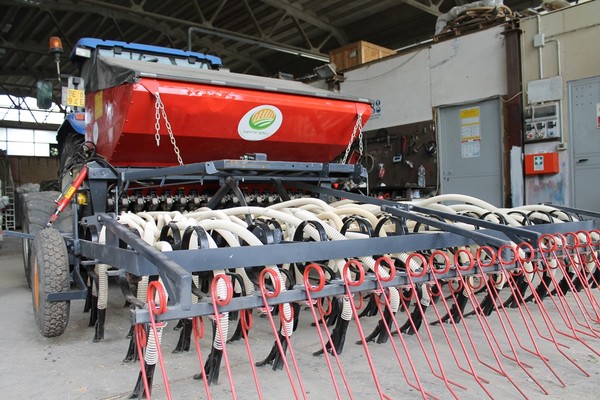
An experimental seed drill against weeds
A pool of researchers from Crea Foggia has completed a test programme with a new seed drill that promises considerable benefits in wheat cultivation
Straw grain crops, currently needed more than ever for the world food supply, must be kept free from pests when in their early delicate development phases in the field. In theory, this is the starting point for achieving maximum productive yields and a viable profitability for farmers.
Chemistry provides substances that are more or less effective in achieving the purpose, but in the vast majority of situations, it is not capable of solving all the problems by itself. It therefore has to rely on all other agronomic techniques that can eliminate or at least slow down the damage caused by the premature and significant emergence of both weeds and dicotyledons. Undeniably, in both organic and conventional cereal production systems, weeds are a serious problem for the productive and qualitative damage they cause.
In order to minimize the damage from weeds, it is possible to act with preventive systems (false sowing, soil processing, cover crops, etc.), direct interventions (slicing) and indirect methods (choice of competitive varieties, sowing density, period of sowing). In particular, the primary objective of indirect control methods is to improve the competitive ability of crops against weeds.
Sowing density can be an effective system to increase the competitive ability of the crop, because a high density positively affects weed control, although it is not always compatible with the crop’s production characteristics.
The CREA - Foggia Research Centre for Cereals (CER) - has developed and refined a new seed drill prototype with mobile working parts capable of: optimizing the spatial seed layout, ensuring better and faster coverage of the soil by the crop and to ensure that the crop has a more competitive ability against weeds.
This machine is capable of distributing the seed in rows just a few cm apart (≤ 5 cm), simulating broadcasting while ensuring a proper seed depth. Under these conditions, using a sowing dose of between 200 and 250 kg/ha, a more uniform distribution of plants in space is guaranteed, so that the distance between plants on the row is close to the distance between the rows. In this way, the presence of weeds is reduced by the smaller width between rows, for all the sowing doses and for the grain varieties used, in particular the Senatore Cappelli (tall antique variety) and PR22D89 (short modern variety).
The sowing method, tested by Crea’s researchers by modifying the geometric layout of plants on the field, optimizes the space for each plant in terms of availability of light, water and nutrients and exerts more competitive action against weeds. This work contributes to limiting the usage of plant protection products, also in accordance with Directive 2009/128/EC of 21 October 2009 and by Italian Legislative Decree no. 150 (article 3, paragraph 8). Given its good operation, this seed drill will soon be marketed by the company 4F di Franco e Fernando Fratta.








